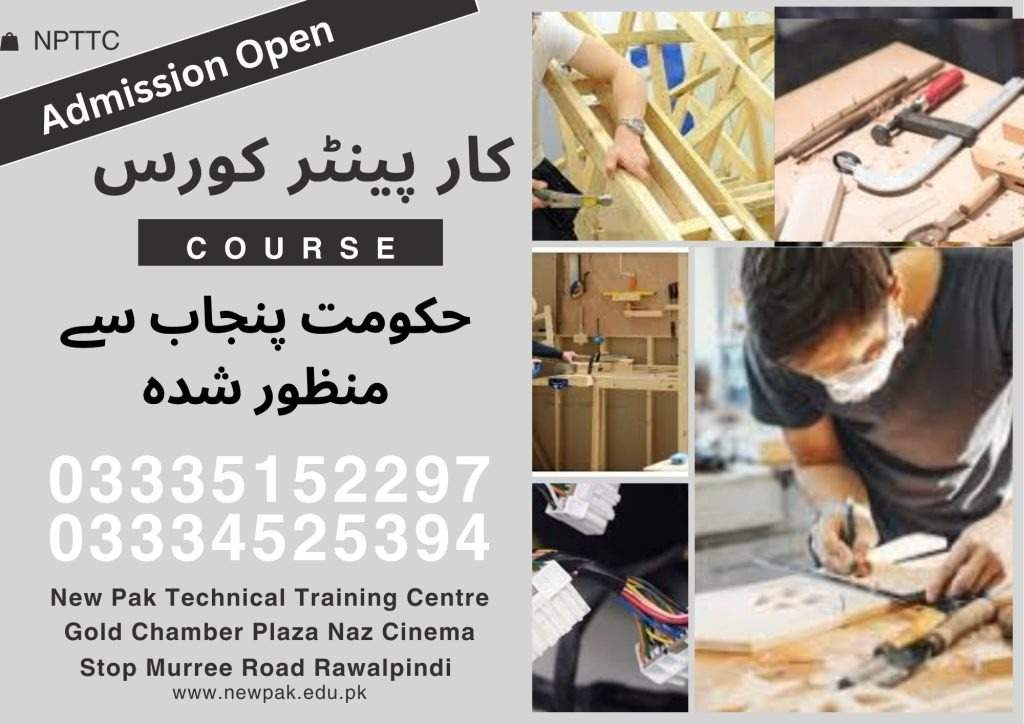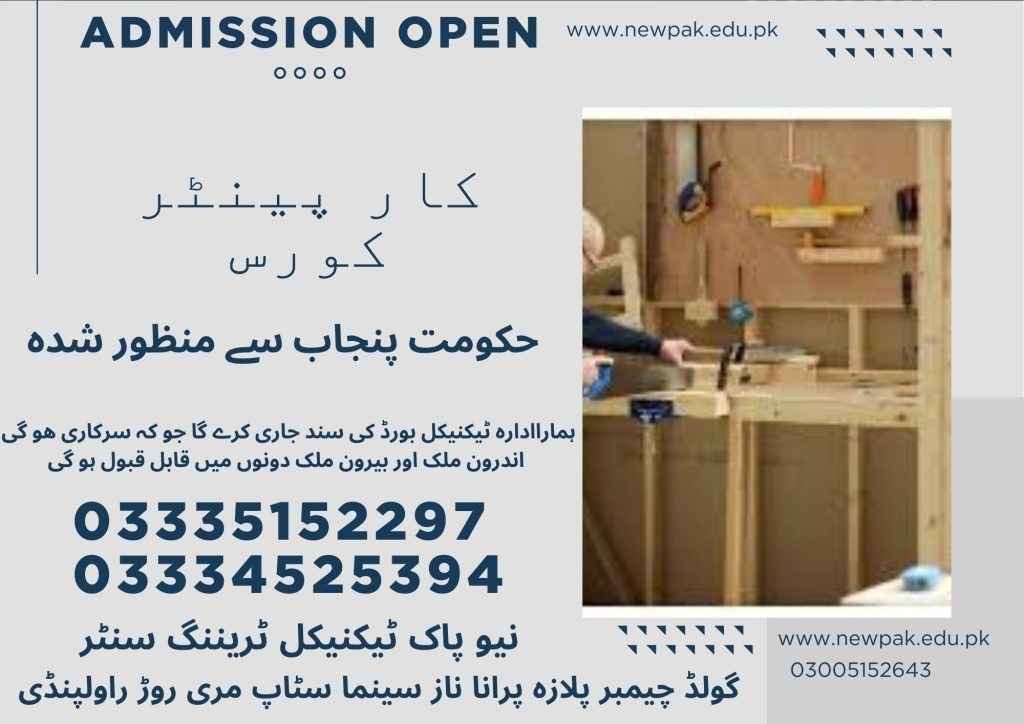
Carpenter Course In Rawalpindi Islamabad
Carpentry is a key trade focused on building and repairing wooden structures using various tools and techniques. The carpenter diploma, part of practical training programs, equips students with core carpentry skills training through hands-on practice and classroom learning. Ideal for those exploring expert classes or considering carpentry degree programs, the course covers measuring, cutting, joining, and basic construction methods essential for safe and effective work.
Course Overview
This course combines foundational carpentry skills with advanced techniques to prepare students for diverse roles in the construction industry. Learn to safely handle tools, perform precise measurements, execute joinery, and build complex structures. The curriculum balances theory and practice, making it ideal for anyone seeking professional carpentry classes or comprehensive carpentry training programs focused on woodworking and finish carpentry.

Course Duration
06 | Months
- Introduction to Carpentry
- Tools and Materials in Carpentry
- Carpentry Safety Practices
- Measuring and Cutting
- Fastening and Joining Methods
- Basic Woodworking & Surface Prep
01 | Year
- Introduction to Carpentry
- Tools and Materials in Carpentry
- Carpentry Safety Practices
- Measuring and Cutting
- Fastening and Joining Methods
- Basic Woodworking & Surface Prep
- Structural Carpentry
- Sheathing and Exterior Work
- Roofing Systems
- Cabinet Making
- Stair Building and Design
- Trim and Finish Carpentry
Course Outline (6 Months)
Introduction to Carpentry
Month 1
- Overview of the carpentry trade
- History and evolution of carpentry
- Types of carpentry work
Tools and Materials in Carpentry
Month 2
- Introduction to hand tools and power tools
- Wood materials, adhesives, and general carpentry materials
- Care and maintenance of tools
Carpentry Safety Practices
Month 3
- Personal Protective Equipment (PPE)
- Safe tool handling
- Job site safety protocols and emergency procedures
Basic Measuring and Cutting
Month 4
- Measurement units and conversions
- Measuring tools and techniques
- Cutting with hand saws and power saws
Fastening & Joining Methods
Month 5
- Types of fasteners (nails, screws, bolts)
- Joinery basics (butt joints, lap joints, etc.)
- Common adhesives and their applications
Woodworking & Surface Preparation
Month 6
- Types and characteristics of wood
- Woodworking tools and functional use
- Sanding and basic finishing techniques
Course Outline (1-Year)
Months 1–6: Core Carpenter Course In Rawalpindi Islamabad
(Same course content as the 6-month program but with more detail, role-plays, software demos, and assessments.)
Structural Carpentry
Month 7
- Framing techniques
- Wall, floor, and roof framing methods
- Load-bearing considerations
Sheathing & Exterior
Month 8
- Sheathing materials and installation
- Siding types and applications
- Moisture barriers and insulation basics
Roofing Systems
Month 9
- Roofing materials overview
- Roof framing basics
- Shingling and waterproofing techniques
Advanced Cabinet Making
Month 10
- Cabinet design principles
- Cabinet construction methods
- Drawer and door installation
Stair Building and Design
Month 11
- Staircase layout planning
- Stringers, treads, and risers
- Building straight and L-shaped stairs
Trim and Finish Carpentry
Month 12
- Interior trim installation (baseboards, crown molding)
- Window and door casing techniques
- Final carpentry finishing and touch-ups

Career Opportunities
- Residential Carpenter
- Commercial Carpenter
- Cabinet Maker / Furniture Maker
- Finish Carpenter
- Framing Carpenter
- Construction Supervisor / Site Foreman
- Stair Builder
- Renovation and Remodeling Specialist
Conclusion
The comprehensive Carpenter Course In Rawalpindi Islamabad offers hands-on training in carpentry skills through practical and classroom learning. Ideal for those seeking professional carpentry training programs or classes, it prepares students for various roles in residential, commercial, and finish carpentry. Whether you’re exploring carpentry degree programs or starting with foundational skills, this program provides a solid pathway to a successful career in the construction industry.






